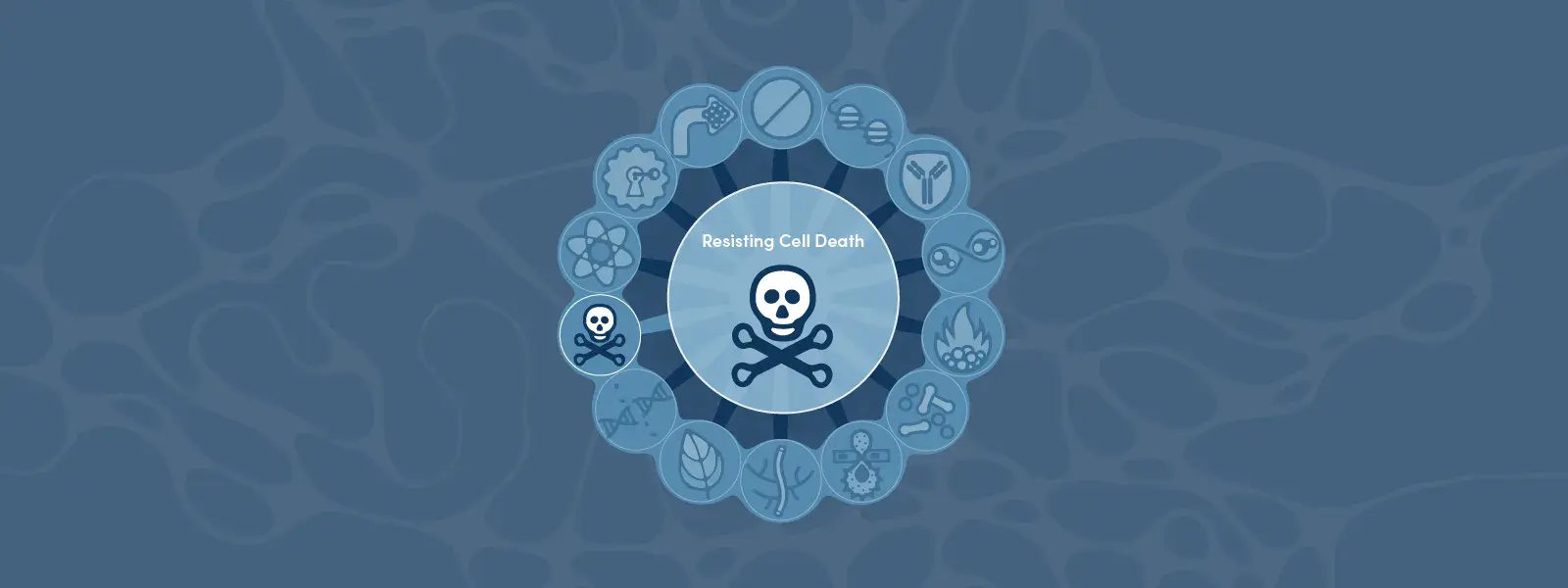Protein adenosine diphosphate, or ADP-ribosylation, is a fascinating post-translational modification (PTM) found in all of life’s kingdoms.1 Since its discovery over 60 years ago by Pierre Chambon,2 scientists have characterized the relevance of ADP-ribosylation in processes as diverse as DNA damage repair and homeostasis,3 cytoskeletal assembly,4 innate immunity,5 and rRNA biogenesis.6 Due to its role in such major cellular processes, ADP-ribosylation is a promising target for therapeutic intervention and has gained attention as a cancer treatment strategy.
We recently released a rabbit monoclonal antibody for detecting the ADP-ribosylation modification. The product is available in the following formats:
- Poly/Mono-ADP Ribose (D9P7Z) Rabbit mAb #89190
- Poly/Mono-ADP Ribose (D9P7Z) Rabbit mAb (BSA and Azide Free) #29889
- Poly/Mono-ADP Ribose (D9P7Z) Rabbit mAb (Alexa Fluor® 488 Conjugate) #88873
*Additional antibody formulations are always being added! Check the CST product catalog for an up-to-date list of products for this ADP-ribose antibody clone.
Similar to our PTMScan® products, this clone can recognize the ADP-ribosylation PTM independently of the surrounding amino acid context, and is also species agnostic. Therefore, it can detect this unique PTM regardless of whether it occurs on residues such as glutamate, aspartate, serine, arginine, lysine, cysteine, or others. This versatility allows it to be used to study all instances of ADP-ribosylation in any given biological sample.
Additionally, the antibody clone can detect ADP-ribosylation when it is attached to proteins either as a single ADP-ribose (ADPr) unit, known as mono ADP-ribosylation (MAR, or MARylation) or as a chain of ADP-ribose units, referred to as poly ADP-ribosylation (PAR, or PARylation).
With such a broad basis of antigen recognition, how was the ADP-ribosylation specificity of our antibody clone assessed? This blog describes the experiments we conducted in our validation testing, which included inducing and inhibiting MAR- and PARylation, methodologies you might find helpful for your own research.
Validating the CST Mono/Poly ADP-Ribosylation Antibody
As scientists, we know firsthand that having an antibody you can trust is critical for moving your research forward. Developing a highly specific ADP-ribosylation antibody required extensive scientific expertise and collaboration from many of us in the proteomics department. As with all CST antibody validation campaigns, antibody specificity was confirmed using multiple experiments, including the following three strategies:
- A binary model to induce MAR/PAR
- A binary model to block MAR/PAR induction
- An enzymatic model to remove MAR/PAR
Singularly, any one of these strategies could have been used to test antibody specificity, but together, validation campaigns such as this one are why we can guarantee CST antibodies work as intended. You can read more about the three experiments below, the methodology of which can help inform your own MARylation and PARylation experiments.
Experimental Induction and Inhibition of MARylation and PARylation
To induce PAR, we treated a sample with hydrogen peroxide (H2O2). Hydrogen peroxide induces PAR through MAPK8 (also known as JNK1) translocation into the nucleus, where it phosphorylates and activates the PAR-generating enzyme PARP1.7
Conversely, treatment with talazoparib inhibits PAR. The chemical acts as both a PARP catalytic inhibitor and a PARP "trap"—it secures the PAR-generating enzyme PARP1 to double-stranded DNA breaks, preventing H2O2-mediated PAR induction.3
The experiments to induce MAR/PAR and to block MAR/PAR induction are shown in the western blot assay in Figure 1.

Figure 1. Western blot of Hela cells untreated (-) or treated (+) with H2O2 or Talazoparib.
In another experiment, the enzyme poly-ADP-ribose glycohydrolase (PARG) was used to remove ADP-ribosylation. PARG trims PAR down to MAR, and reduces the PAR signal in H2O2 treated cells (Figure 2).

Figure 2. Induction of PARylation signal in HeLa cells by hydrogen peroxide (left) and removal of the PARylation signal with recombinant human PARG (right), where IF detection used Poly/Mono-ADP Ribose (D9P7Z) Rabbit mAb #89190 (green), β-Actin (8H10D10) Mouse mAb #3700 (red), and DAPI #4083 (blue).
Using these experimental models, we validated the use of this new PTM antibody clone for western blot (WB) and immunofluorescent (IF) applications.
Therapeutic Potential: PARP Enzymes in Mono- vs Poly-ADP-Ribosylation
In nuclear processes, the regulation of PAR is often emphasized, and it would be understandable to assume that MAR mirrors PAR in functionality. However, this is not necessarily the case, and some of the confusion may be due to the shared names of the PARP family of enzymes that form this interesting PTM.
The poly-ADP-ribose polymerase (PARP) family of proteins share a catalytic domain that transfers the ADP-ribosyl group from NAD+ to the target protein. There are 17 known human PARP enzyme “writers,” which induce either PAR or MAR as follows:
- PARP 1, PARP 2, PARP 4, PARP 5A, and PARP 5B add long chains of ADP-ribose (PARylation).
- PARP 3, PARP 4, PARP 6, PARP 7, PARP 8, PARP 10, PARP 11, PARP 12, PAPR 14, PARP 15, and PARP 16 are involved in adding a single ADP-ribose unit (MARylation).
- PARP4 is able to both MARylate and PARylate substrates.
One instance where MARylation stands apart from PARylation is in cytoskeletal regulation. Here, PARP 7-mediated MARylation of α-tubulin leads to microtubule depolymerization in the cytoplasm.4
Explore related PARP antibody products in the CST product catalog.
To differentiate between MARylation and PARylation, assay workflow protocols using PARG co-treatment can be employed, such as that shown in Figure 2. This treatment removes PAR but not MAR and can be used in WB or IF assays alongside the CST ADP-Ribosylation antibody clone to further study the unique functions of MAR vs PAR.
PARP Inhibitors in Cancer Therapies
In the last decade, the PARP family has gained attention from oncologists seeking new targets in the battle against cancer.
Because successful DNA repair requires functional PARylation, this requirement can be exploited in cancer treatments that induce double-stranded breaks (like platinum-based therapies) combined with PARP inhibitors. This leaves DNA unrepaired at stalled replication forks and induces genomic instabilities.
Multiple clinical trials have demonstrated the efficacy of PARP inhibitors in pancreatic cancer, small cell lung cancer, as well as ovarian and breast cancer irrespective of BRCA1 status.9 As of 2024, four PARP inhibitors—Olaparib, Rucaparib, Niraparib, and Talazoparib—have been approved by the US FDA for the treatment of ovarian cancer, fallopian tube and primary peritoneal cancers and HER-2 negative breast cancer.
As one of biology's central PTMs with profound clinical relevance, it will be exciting to see where ADP ribosylation research takes us next.
Related Products & Further Reading
Explore related PARP antibody products from CST to aid in your MARylation or PARylation research:
- PARP (46D11) Rabbit mAb #9532 (validated for WB, IP, and eClip)
-
PARP Antibody #9542 (validated for WB)
-
PARP (46D11) Rabbit mAb (BSA and Azide Free) #17245 (validated for WB)
-
PARP (46D11) Rabbit mAb (Sepharose® Bead Conjugate) #6704 (validated for IP)
Learn more about CST motif technology in the following blog: A Revolution in Proteomics Analysis: PTMScan 20 Years Later
--
Barry M. Zee, PhD, and Jeff Silva, PhD, principal scientists in the Proteomics Department at CST, as well as Alexandra Foley, scientific content marketing manager, contributed to writing this blog post.
Select References
- Perina D, Mikoč A, Ahel J, Ćetković H, Žaja R, Ahel I. Distribution of protein poly(ADP-ribosyl)ation systems across all domains of life. DNA Repair (Amst). 2014;23:4-16. doi:10.1016/j.dnarep.2014.05.003
- Chambon P, Weill JD, Mandel P. Nicotinamide mononucleotide activation of a new DNA-dependent polyadenylic acid synthesizing nuclear enzyme. Biochem Biophys Res Commun. 1963;11:39-43. doi:10.1016/0006-291x(63)90024-x
- Rouleau-Turcotte É, Pascal JM. ADP-ribose contributions to genome stability and PARP enzyme trapping on sites of DNA damage; paradigm shifts for a coming-of-age modification. J Biol Chem. 2023;299(12):105397. doi:10.1016/j.jbc.2023.105397
- Palavalli Parsons LH, Challa S, Gibson BA, et al. Identification of PARP-7 substrates reveals a role for MARylation in microtubule control in ovarian cancer cells. Elife. 2021;10:e60481. Published 2021 Jan 21. doi:10.7554/eLife.60481
- Fehr AR, Singh SA, Kerr CM, Mukai S, Higashi H, Aikawa M. The impact of PARPs and ADP-ribosylation on inflammation and host-pathogen interactions. Genes Dev. 2020;34(5-6):341-359. doi:10.1101/gad.334425.119
- Kim DS, Challa S, Jones A, Kraus WL. PARPs and ADP-ribosylation in RNA biology: from RNA expression and processing to protein translation and proteostasis. Genes Dev. 2020;34(5-6):302-320. doi:10.1101/gad.334433.119
- Zhang S, Lin Y, Kim YS, Hande MP, Liu ZG, Shen HM. c-Jun N-terminal kinase mediates hydrogen peroxide-induced cell death via sustained poly(ADP-ribose) polymerase-1 activation. Cell Death Differ. 2007;14(5):1001-1010. doi:10.1038/sj.cdd.4402088
- Slade D, Dunstan MS, Barkauskaite E, et al. The structure and catalytic mechanism of a poly(ADP-ribose) glycohydrolase. Nature. 2011;477(7366):616-620. Published 2011 Sep 4. doi:10.1038/nature10404
- Slade D. PARP and PARG inhibitors in cancer treatment. Genes Dev. 2020;34(5-6):360-394. doi:10.1101/gad.334516.11




/42157_chimeric%20antibody%20blog%20featured3.webp)

